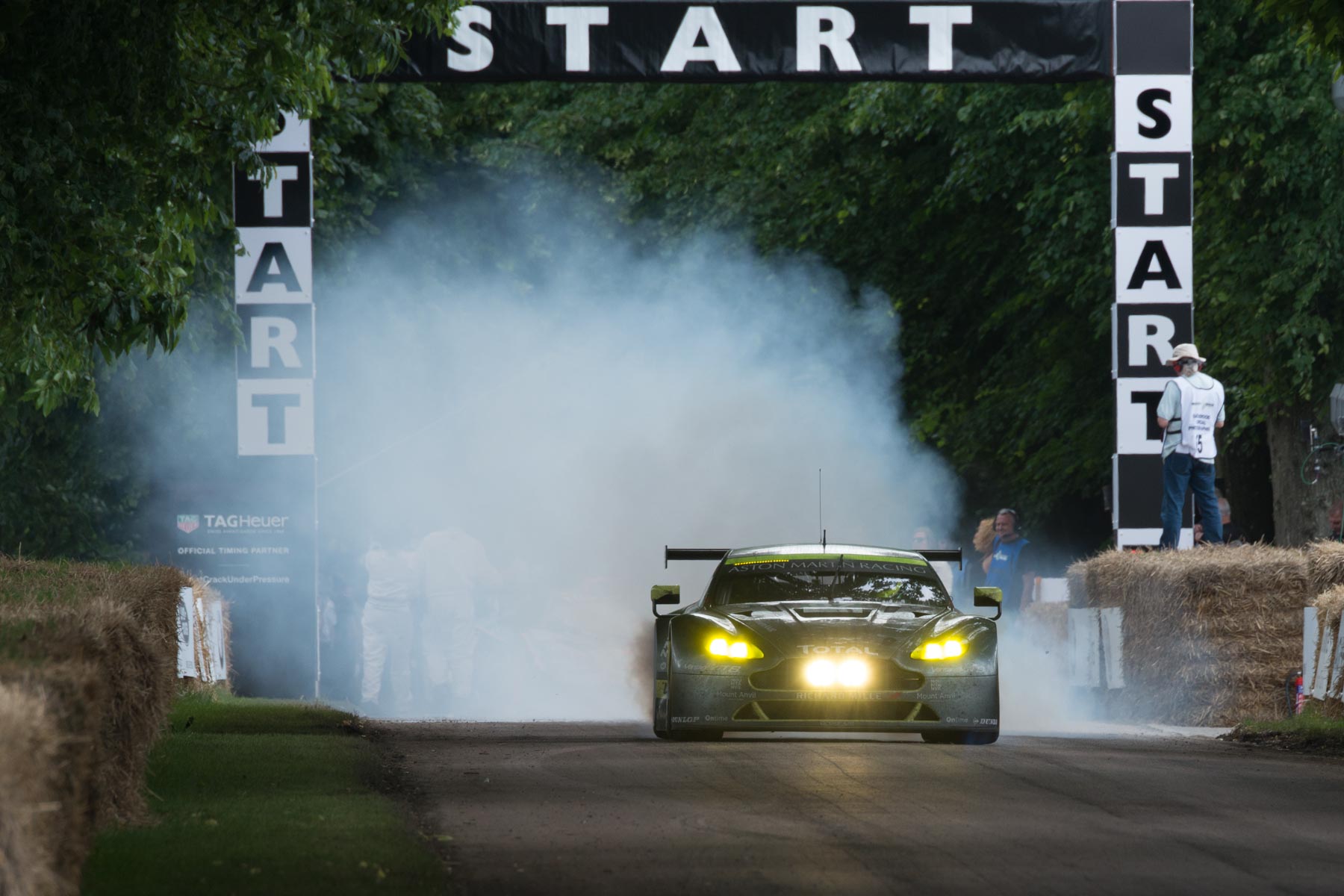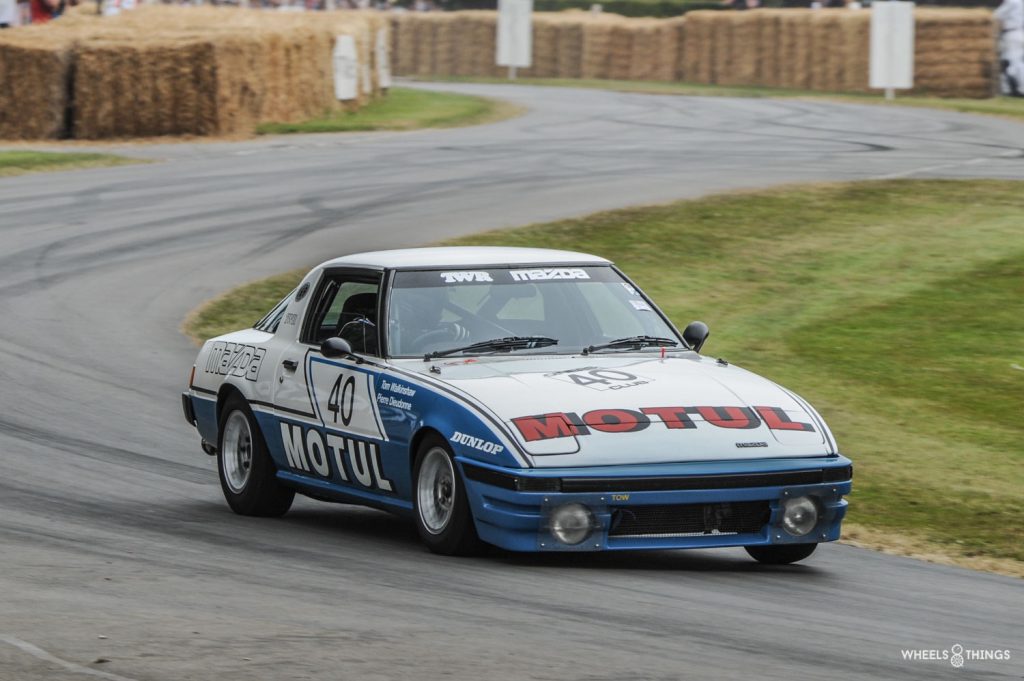
For this second edition of our Retrospective section, we go to the 2015 Festival of Speed at Goodwood. The central brand of this year’s event was Mazda and the focus was on motorsport activities. There were masses of Mazda racing cars brought over from America, Europe and of course Japan.
The original 1991 Le Mans winning Mazda 787 was specially flown in from the Mazda museum in Japan. A replica of this 787 was on display at the 100 years Mazda Expo in the Brussels Autoworld museum. In our article on the subject, you have already read that Mazda was the first Japanese manufacturer to win the 24 Hours of Le Mans. Less well known, perhaps, is that ten years earlier they had also won the 24 Hours of Francorchamps, and were the first Japanese marque to do so.
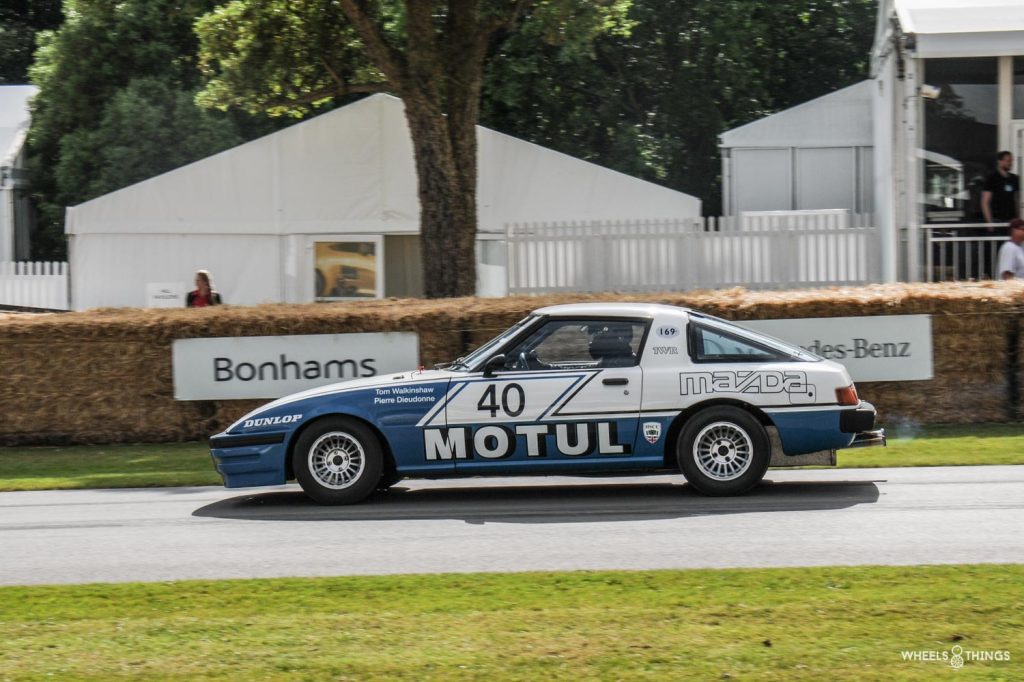
This Japanese triumph, however, had a Scottish base and was thanks to one Tom Walkinshaw, from now on TW. He began his racing career in 1968 and made his debut in the Scottish MG Midget Championship. A year later he won the Scottish Formula Ford 1600 title. He moved to the British Formula 3 series and made his debut there with a Lotus, after which he became a factory driver for March. There he had a serious accident which resulted in several fractures in his body. He went on to drive a few more formula races, but from 1974 onwards concentrated on touring car and GT races. Ford hired him and TW would compete in the British Championship with the Capri. For endurance races, such as the 24 Hours of Francorchamps, John Fitzpatrick is his co-pilot. In 1976, he founded his own team, which became Tom Walkinshaw Racing or TWR. He also won that year, with John Fitzpatrick, the 1000km of Silverstone with a BMW 3.5 CSL. This is a race for the World Championship brands. This also led him to start a partnership with BMW. From 1977, he competes in the British Touring Car Championship with a 530i. This BMW is an ideal long-distance racer, but in the typical sprint races, such as the BTCC, he has to let the lighter Capri’s pass him. He does win one race and takes several podiums, but cannot threaten Ford for the title. Tom also drives for other BMW teams and will participate in the 24 hours of Le Mans on a BMW 30 CSL of the Belgian Luigi team. Unfortunately, he is on the wrong car, as teammates Xhenceval-Dieudonné and Dini win the IMSA class. In the European Championship he has more luck. Together with Dieter Quester, he won the RAC Tourist Trophy at Silverstone in the Alpina BMW 30 CSL. In 1977, Alpina placed a different co-driver in the car, depending on the race or country. In England, Tom got to sit behind the wheel of the Gösser BMW CSL.
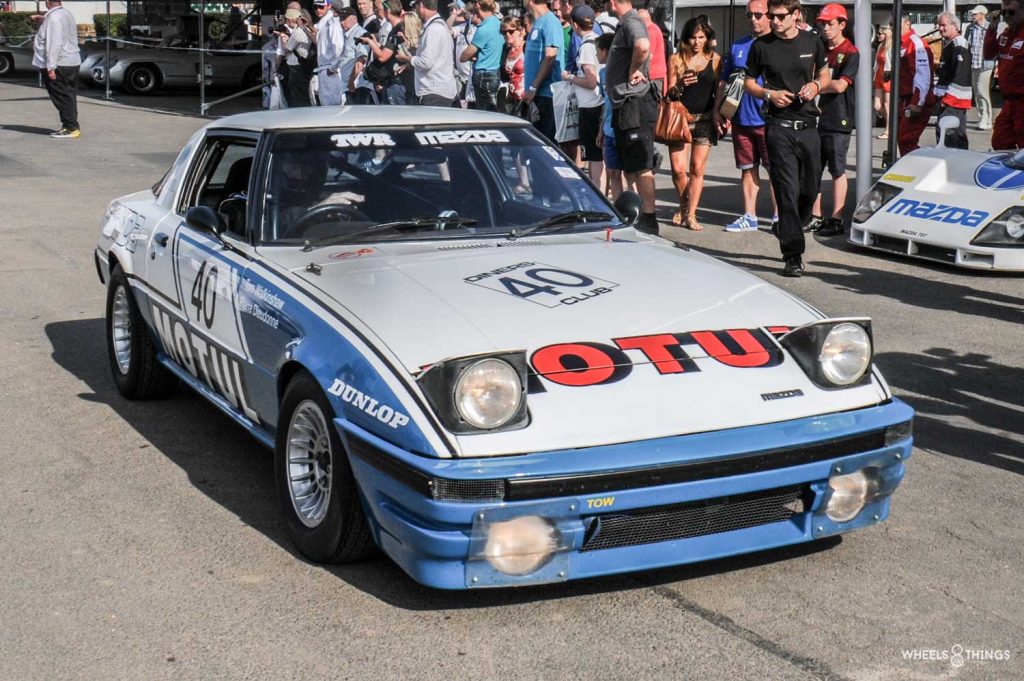
He went looking for another make for the BTCC and ended up at Mazda. With the RX7 he can compete in the second division ( 1600 to 2500 cc ). The points system awards the same number of points in the three participating series. So whether you participate with a Renault 5, a Triumph Dolomite or a Ford Capri, at the end of the day there are three series winners who receive the same number of points in their series. These points also count towards the general classification.
TWR makes the RX7 a Group 1 version. The Mazda is not really what you would call a tourism car and Porsche thought so too. An official complaint followed quickly with the message that the organisation should also allow their 924. The complaint was rejected and the Mazda was given the green light. The 1.1 litre wankel-engine will be increased from 105 to 225 race horsepower. However, there was a little problem. Because a rotary engine develops more power than a normal petrol engine, the RX7 had to move to the higher class up to 2500 cc. Tom himself takes place at the wheel and lets the RX7 debut in the BTCC. And this is not bad at all as he wins all but two races in his class. However, he did not win the championship as Richard Longman did slightly better in the smallest class with his Mini 1275 GT and became the 1979 BTCC champion.
Any complainers? Yes, the spectators. The small Mazda with its wankel engine made so much noise that it was an assault on their eardrums. From then on earplugs are part of their regular equipment for a day at the BTCC.
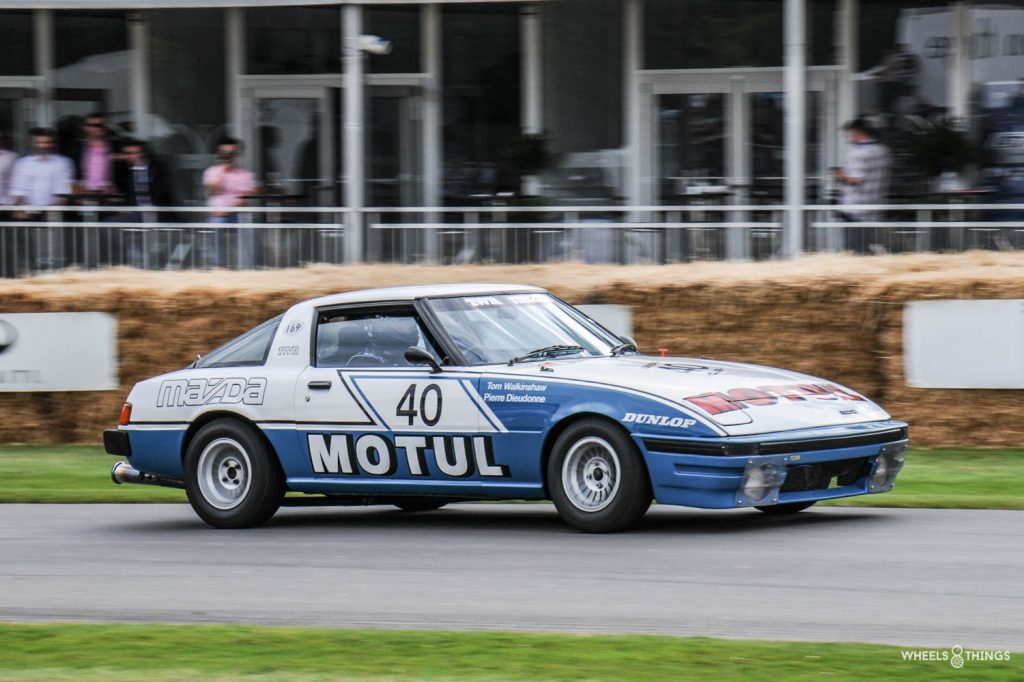
In mid-season, TW hires Win Percy as their number one driver and with success, as Percy wins all Class 2 races in 1980. This makes Mazda the first Japanese brand to win the BTCC title. With the support of the Belgian importer and oil manufacturer Motul, TWR participates for the first time with the Mazda in the 24 Hours of Francorchamps in 1980. At that time, the race with the most prestige for cars in the touring car class. The best teams from France, England, the Netherlands and Belgium compete against each other. These four countries were the reference in this class at the time.
TWR will participate with four RX7 cars. Familiar names such as Win Percy, Jeff Allam, Didier Theys, Pete Lovett and even legend Derek Bell will be at the wheel of two cars. The fast Francorchamps circuit doesn’t suit the Mazda as well as the English circuits and in pure speed they are 3 to 4 seconds short of playing up front. Furthermore there are several technical problems such as a blown engine and a broken wheel that force two cars to retire. The other two also have many problems. They do not reach the finish but are still included in the official results with more than 70 laps to go. By the end of the 24 hours all Mazda’s are back in their trucks. TWR will return home with a lot of homework. The BMW 530i Juma of Joosen/Vermeersch and Dieudonné was in the lead for most of the race but had to return to its box for a long repair due to a broken suspension. The Belga Capri of the Martin brothers takes the lead and has a 2 minute and 45 second advantage over the Juma BMW at the finish.
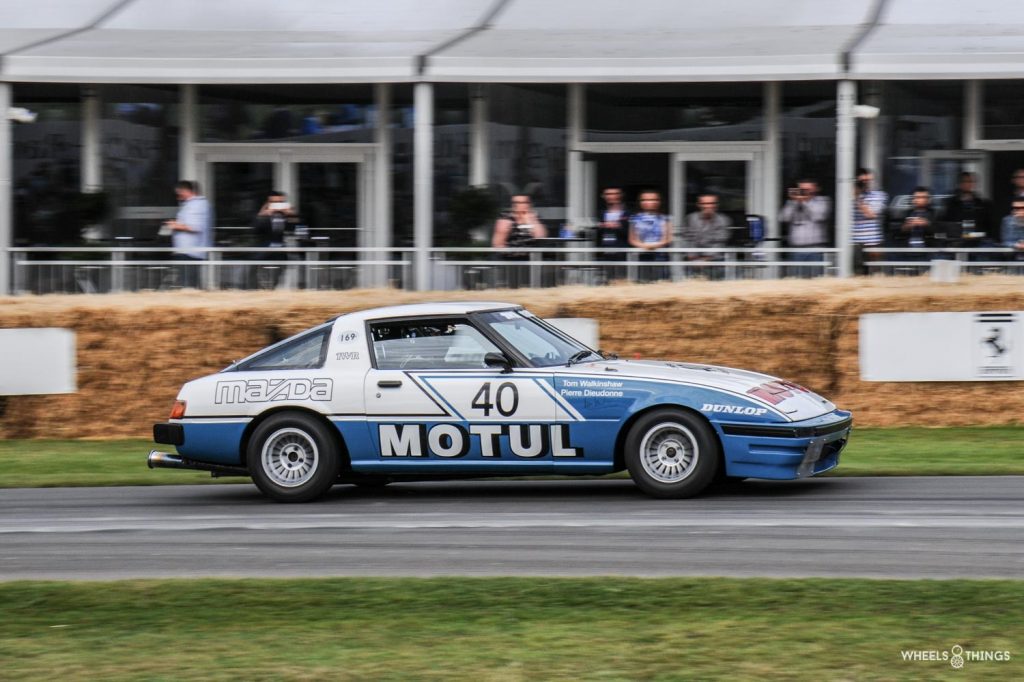
In 1981, TWR will fight for both the English and Belgian touring car championships. Win Percy is again BTCC champion. In addition to his class 2 victories, he even wins two races overall at Oulton Park and Donington. The Mazda 81 has thus become even better. He even competes against team-mates in class 1 because TWR had meanwhile taken over the official Rover programme from David Price Racing. In Belgium, Pierre Dieudonné, who had come over from BMW Juma, also achieved success and won the title.
But the most important event in 1981 was the 24 Hours of Francorchamps. TWR had again prepared four Mazda cars, all of which were driven by top drivers. After a break, team boss Tom once again got behind the wheel of the RX7 together with our fellow countryman Pierre Dieudonné. The RX7 is now considerably faster and does 6 seconds less than a lap at Francorchamps.
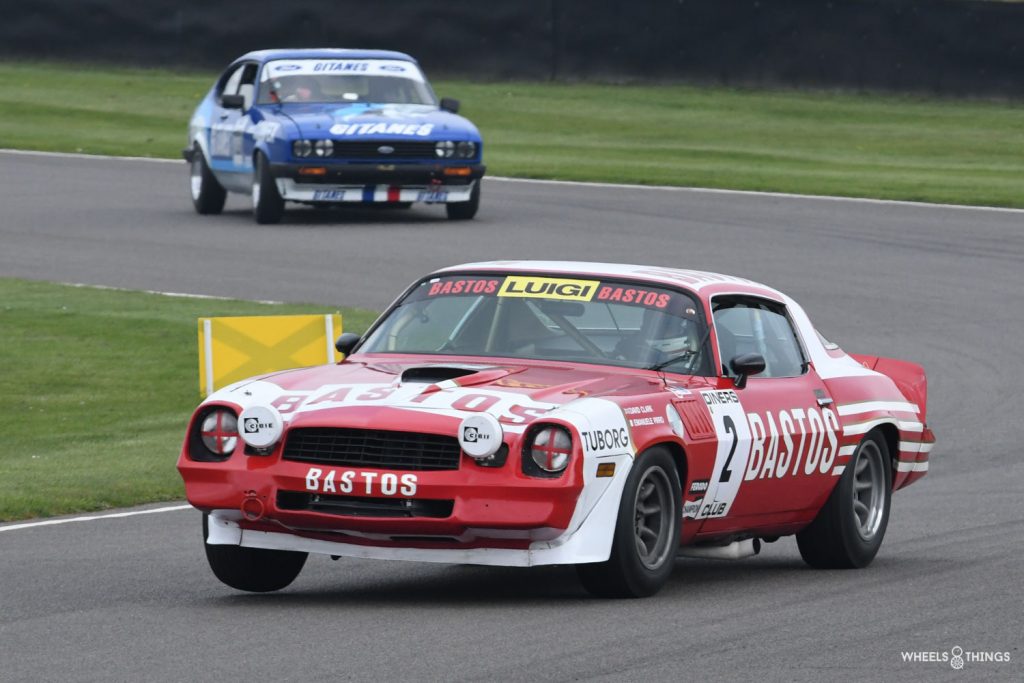
TW even takes second place in the qualifications behind the Luigi Bastos Chevrolet Camaro of Bourgoinie/Wissel and Cooper. TWR loses one RX7 in qualifying because it is too slow. The Mazda also has a new muffler. It still makes a lot of noise but it is already a bit less than in 1980. The spectators could certainly appreciate this.
The Saturday before the start, the water came pouring down from the sky. Not really abnormal as it happens more often in Francorchamps. 75.000 spectators see the Mazda, in apocalyptic circumstances, storm the Radillon first with 55 followers on his trail. This doesn’t last long though, as it’s mainly the Chevrolet Camaro’s that dominate the first few hours. However these dropped out one by one and so after seven hours of racing the Juma BMW 530i of Joosen/Vermeersch and Andruet took the lead for the first time. The Mazda of our compatriot Marc Duez has to come in for a repair with gear shifting problems, another car drops out with a broken wheel. (Same problem as the year before). Also the Ford Capri’s are gradually coming to the front because one hour later Woodman/Buncome and Clark are the new leaders. Walkinshaw and Dieudonné have also rejoined the leading group with their RX7.
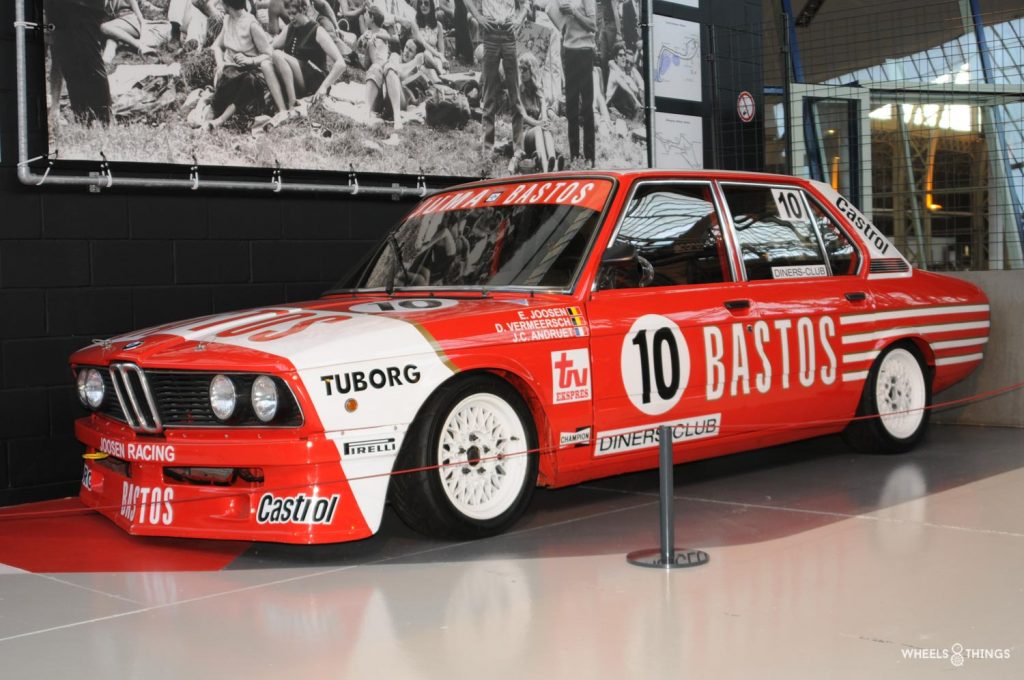
From midnight onwards, a duel between the Juma BMW and the TWR Mazda will begin. A duel that will certainly go down in the history books. It will last for 13 hours. Both cars stay close to each other but are not spared from problems. The Mazda has to come in with faulty lighting and the BMW is struggling with its new Pirelli tyres that are wearing out faster than expected and need to be changed more often than planned.
At the crack of dawn on Sunday the difference between the leading BMW and the Mazda is 35 seconds. Dirk Vermeersch who is at the wheel of the BMW at that moment, misses the bus stop chikane. He ignores the instructions of the track marshals to get back on the track. This is reported to the race direction and Dirk is called in where he hears the severe verdict that he is disqualified and has to leave the race. Fortunately, the Bastos BMW can continue the race with the two other pilots.

The duel remains very exciting. After 20h, the BMW is in the lead with 8 seconds and an hour later it is still 3 seconds. The final pit stops for both cars go without a hitch and with two hours to go the Mazda is in the lead with 10.7 seconds difference. TW at the wheel of the Mazda and Jean Claude Andruet in the BMW. The spectators present get their money’s worth and expect an exciting end with a final rush of the BMW on the Mazda. Unfortunately, things turned out differently. The BMW unexpectedly comes to its box with a ticking in the engine. A valve pivot has failed. Fortunately for the Juma team it is one that can be replaced without having to dismantle the cylinder head. The Mazda cruises to victory without any problems and takes a two lap lead. The BMW has enough advantage over the Ford Capri of Woodman to maintain its second place. Juma and pilot Eddie Joosen thus finish for the fourth time in a row in second place in the 24 Hours of Francorchamps. Victory is for the TWR Mazda of Tom Walkinshaw and Pierre Dieudonné, which ensures the first success of a Japanese make in this race. Ten years later, Nissan would be the second brand to win with its Skyline GTR. The TWR Mazda RX7 is also the first car to win this race with a rotary engine as its power source.
This success will not stop TW from discontinuing its programme with the Mazda RX7. He had already started with Rover and would add Jaguar from 1982. With the XJS 5.3 V12 Coupé, he will participate in the new European Group A Touring Car Championship. A new challenge that, after a difficult start in 1984, will be successfully completed by winning the European Championship and the 24 Hours of Francorchamps. From 1985 TWR will be active in the World Championship Group C, Imsa and the 24 Hours of Le Mans with its Jaguar sports cars. In our archive you can find all the information about the first XJR 5 of 1985. They get a factory status and victories in the World Championship, Imsa, and twice the 24 hours of Daytona and Le Mans will be on the list of honour of the TWR team. A magnificent achievement for the little Scot Tom Walkinshaw. Later, an ex-Jaguar chassis, fitted with a Porsche engine, would win the 24 Hours of Le Mans twice in 1996 and 1997.
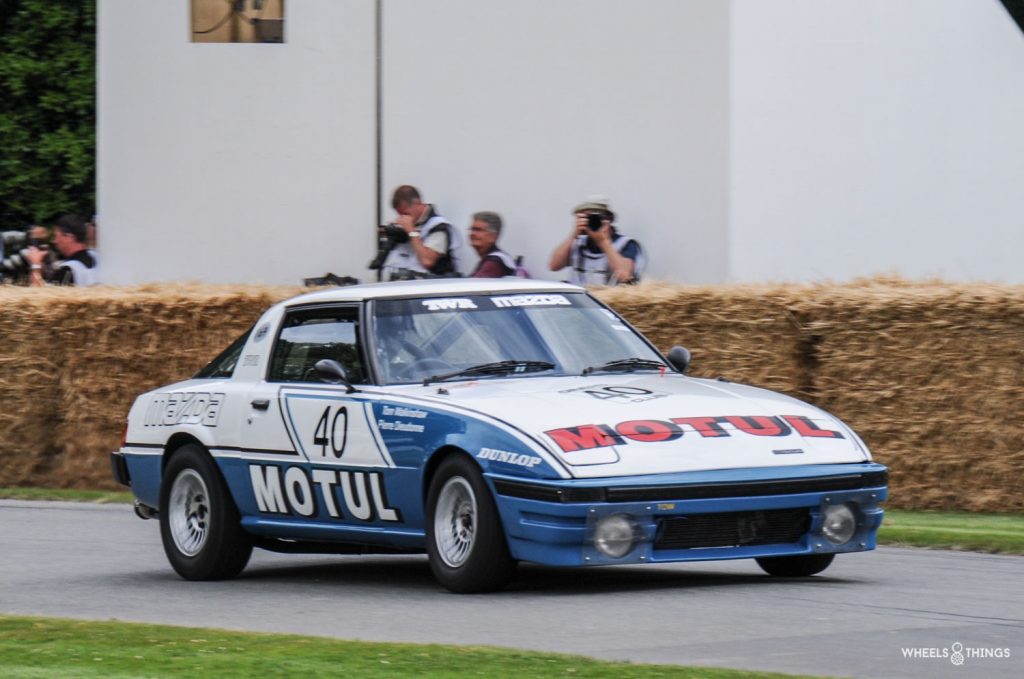
We saw the winning RX7 back at the Festival of Speed at Goodwood in 2015. Tom Walkinshaw could no longer be there as he passed away at the end of 2010. Teammate Pierre Dieudonné once again took his seat in the 1981 “noise maker”. He drove it up the famous Goodwood hill and fortunately he had brought his earplugs because the RX7 still made as much noise as in 1981!
Report & Photos: Joris de Cock
